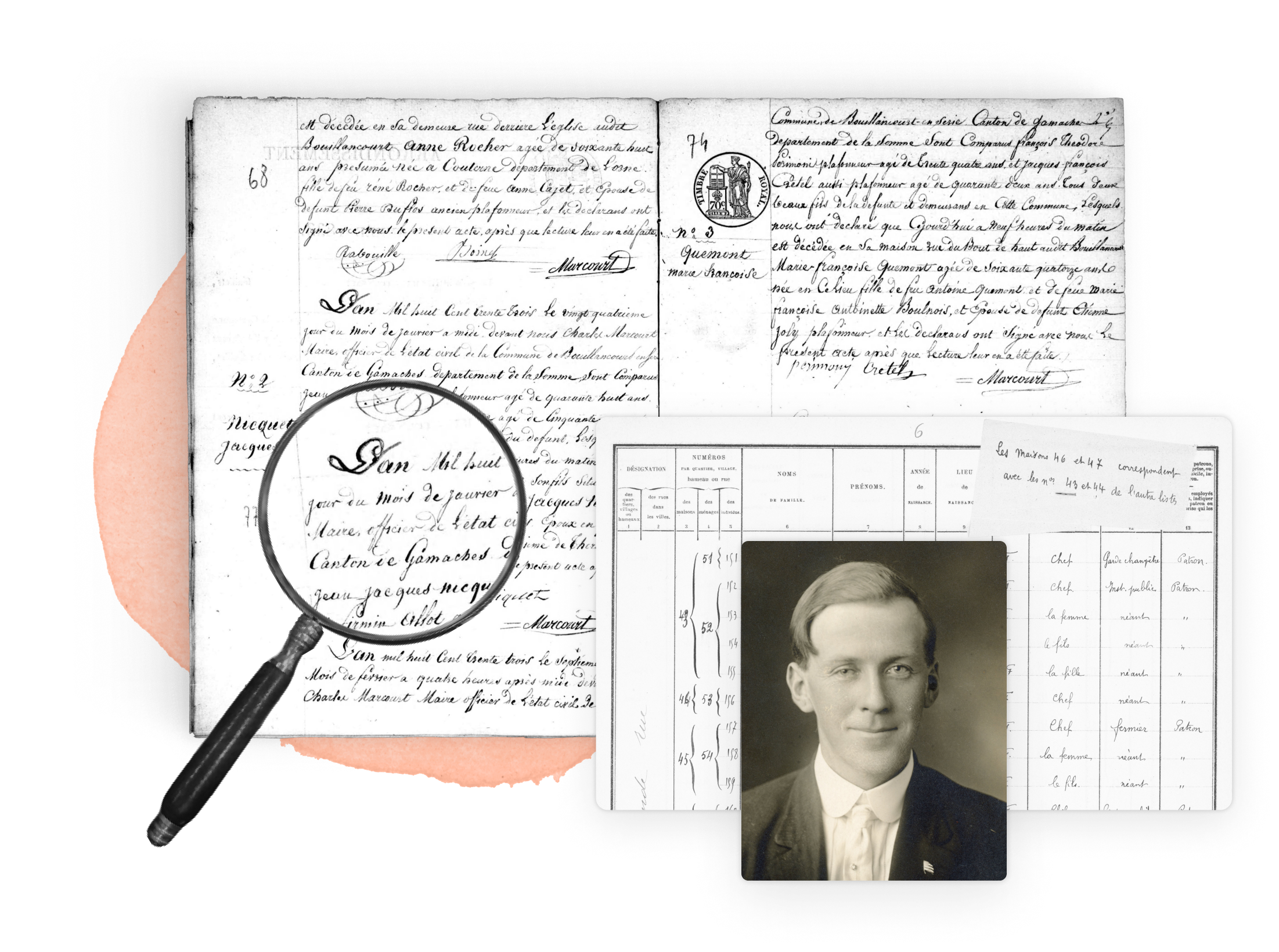
The flight and expulsion of Germans after WWII refers to various ways in which German people either fled from Germany itself to avoid prosecution after the conflict ended or were removed from former German lands. A large number of Germans were guilty of war crimes and other offences during the war, many of them members of the SS paramilitary group which ran the concentration camp system during the war and oversaw the Holocaust. Thousands of these attempted to flee from Germany after the war, often passing in secret to Switzerland or along the so-called ‘Ratline’ to get to South America, where many lived out the rest of their lives under assumed aliases. A much more consequential mass movement was the expulsion of millions of Germans from regions which had been controlled by Germany after they were liberated. This was especially the case with Poland, which acquired extensive new territory in East Prussia from Germany after the war and which expelled the vast majority of the German population in 1945 and 1946. Czechoslovakia and Lithuania also saw large expulsions of German people.[1]
Research your ancestors on MyHeritage
Flight and expulsion of Germans after WWII chronology of events
The Second World War saw the rapid rise and fall of the Nazi Third Reich. Prior to annexing Austria in March 1938, Germany’s borders were already significantly broader than they are today. As well as the lands of modern-day Germany, they included East Prussia, a large chunk of northern Poland which was cut off from the rest of Germany, and much of what is now western Poland. Once the war commenced all of Poland was quickly conquered and much of the country was directly annexed to Germany, including the Danzig Corridor that once again connected Germany proper to East Prussia. These are lands which have been historically contested and which were populated by a mix of ethnic Germans and Poles.[2]
The Second World War was effectively a conflict of two distinct halves in Europe. From its commencement in September 1939 through to December 1941 it was characterized by victory after victory for Germany. Poland was conquered first in the autumn of 1939, then Denmark and Norway in April 1940, followed by France and the Low Countries that summer. A year later the Nazis invaded the Soviet Union and made swift advances into eastern Poland, the Baltic States, Belarus and Ukraine between June and October 1941. However, the onslaught stalled in November and December before Moscow and Leningrad were seized and then the United States entered the war in December. This flipped everything on its head and after intense clashes on the Eastern Front in 1942, the entire war changed. By 1943 the Soviets began to push the Germans out of Russia and the Western Allies launched an invasion of Italy after winning the North Africa campaign. Ukraine, Belarus, Poland and the Balkans were liberated in the course of 1943 and 1944 and the D-Day landings occurred in France in the summer of 1944 to open a Western Front. By then attentions were already turning to the post-war settlement of Europe.[3]
While the Soviets were staking out a claim to controlling most of the lands they were liberating in Eastern Europe as communist satellite states, there was no doubt that a Polish state would be reconstituted once the war ended. This would involve Poland acquiring even more land than it had prior to the war at Germany’s expense. Hence, Poland was extended to its modern territorial boundaries, acquiring new land in what is now western Poland and in East Prussia. The northern half of East Prussia was formed into the Kaliningrad Oblast and was taken over directly by the Soviets. As the Poles and Soviets took over East Prussia and other regions like Silesia in western Poland, many people from amongst the large ethnic communities of Germans in these regions began fleeing to Germany proper to escape reprisals. Eventually this became a program of enforced expulsions undertaken by the Polish and Czech governments.[4]

The movement of Germans from East Prussia and western Poland to Germany itself was not the only considerable movement of Germans in the post-war period. The Allies had determined that once the war ended collective punishment for the conflict would not be inflicted on the German people as a whole. This had been the approach followed at the end of the First World War and it had contributed to some extent to the subsequent Second World War. Instead only specific elements of the Nazi movement would be prosecuted for fomenting the war, disturbing the peace in Europe and committing a range of different war crimes.[5]
In this capacity, virtually all officers of the SS, the paramilitary group headed by Heinrich Himmler that ran the concentration camp system and oversaw the Holocaust, were liable to be placed on trial. Thus, in the months and years after the war ended, thousands of members of the SS went into hiding and then gradually made their way via the ‘Ratline’ to South America. There they were allowed to largely live undisturbed under assumed aliases in countries like Brazil, Argentina and Bolivia that had historic Germany communities as a result of migration in the late nineteenth century.[6] Some, like Adolf Eichmann, one of the chief organizers of the Holocaust, were eventually captured and brought to Europe or Israel for trial and punishment, but many others like Josef Mengele and Walter Rauff lived out the rest of their lives in South America down to the 1970s and 1980s.[7]
Extent of flight and expulsions of Germans
It is estimated that anywhere between 2,000 and 10,000 members of the SS and other individuals associated with the Nazi leadership made their way to South America in the second half of the 1940s.[8] The flight and expulsion of Germans from Poland and East Prussia was much more substantial. The Prussian lands and the province of Silesia had been ruled for centuries by Prussia, the largest of the German states that united to form the German Empire in 1871. As such, there were millions of Germans living in these lands. An estimated twelve million either fled or were expelled from Poland and other regions and migrated into the lands of modern-day Germany. While the majority came from Poland or East Prussia, there was an exodus also from parts of Czechoslovakia and other regions.[9] Of these twelve million, about four million entered the lands of East Germany, while roughly eight million went further to the lands being occupied by the Western Allies, what would eventually become West Germany. This process was at its most intense in 1945 and 1946, but it continued through the rest of the 1940s and there were still disputes over whether people of mixed German and Polish heritage could remain in Poland as late as the early 1950s.[10]
Demographic impact of the flight and expulsions

The expulsions reversed centuries of German migration into Eastern Europe and other parts of Central Europe. Germans had been migrating into these regions and colonizing large parts of them since the tenth century. The expulsions reversed all of this. It created a much more ethnically homogenous Poland and also removed a large part of the considerable German minority from Czechoslovakia. In doing so the population of what remained of Germany expanded as over twelve million people were crammed into it in the space of a few years, although the war had led to the deaths of millions of German men and these lands were otherwise somewhat depopulated in the aftermath of the conflict.[11]
One further enduring element of the expulsions was that it began the process of divergence between western and eastern Germany. Two-thirds of those who were expelled or fled from Poland headed for what would soon become West Germany, expecting that conditions would be more liberal here after the war. This created a demographic and economic imbalance between western and eastern Germany, one which was compounded in the decades that followed as millions of people fled from communist East Germany to western-aligned West Germany. These divisions between western and eastern Germany persist down to the present day, even after reunification.[12]
See also
Explore more about post-war German expulsions
- Germany, Telephone Directories records collection on MyHeritage
- Germany, Deaths, 1582-1958 records collection on MyHeritage
- Germany, Prussia and Pomerania Church Records, 1544-1945 records collection on MyHeritage
- Germany Newspapers records collection on MyHeritage
- Poland Newspapers records collection on MyHeritage
- Researching Your German Ancestors at Legacy Family Tree Webinars
- Leaving a paper trail – Other German sources besides church books and civil records at Legacy Family Tree Webinars
- Using MyHeritage to research Polish family history at Legacy Family Tree Webinars
- Borders, Maps and Gazetteers for German Genealogists at Legacy Family Tree Webinars
References
- ↑ Hugo Service, ‘Reinterpreting the Expulsion of Germans from Poland, 1945—9’, in Journal of Contemporary History, Vol. 47, No. 3 (July, 2012), pp. 528–550.
- ↑ Christoph M. Kimmich, ‘The Weimar Republic and the German-Polish Borders’, in The Polish Review, Vol. 14, No. 4 (Autumn, 1969), pp. 37–45.
- ↑ https://encyclopedia.ushmm.org/content/en/article/world-war-ii-key-dates
- ↑ Piotr Eberhardt, ‘The Oder-Neisse Line as Poland's western border: As postulated and made a reality’, in Geographia Polonica, Vol. 88, No. 1 (2015), pp. 77–105.
- ↑ Devin O. Pendas, 'Retroactive Law and Proactive Justice: Debating Crimes against Humanity in Germany, 1945–1950', in Central European History, Vol. 43, No. 3 (September, 2010), pp. 428-463.
- ↑ Gerald Steinacher, Nazis on the Run: How Hitler’s Henchmen Fled Justice (Oxford, 2012).
- ↑ https://encyclopedia.ushmm.org/content/en/article/eichmann-trial
- ↑ https://www.history.com/news/how-south-america-became-a-nazi-haven
- ↑ https://ehne.fr/en/encyclopedia/themes/wars-and-memories/judging-atoning-reconciling/expulsion-germans-czechoslovakia-after-second-world-war
- ↑ https://theconversation.com/postwar-forced-resettlement-of-germans-echoes-through-the-decades-137219
- ↑ https://theconversation.com/postwar-forced-resettlement-of-germans-echoes-through-the-decades-137219
- ↑ https://theconversation.com/how-divisions-between-east-and-west-germany-persist-30-years-after-reunification-126297


